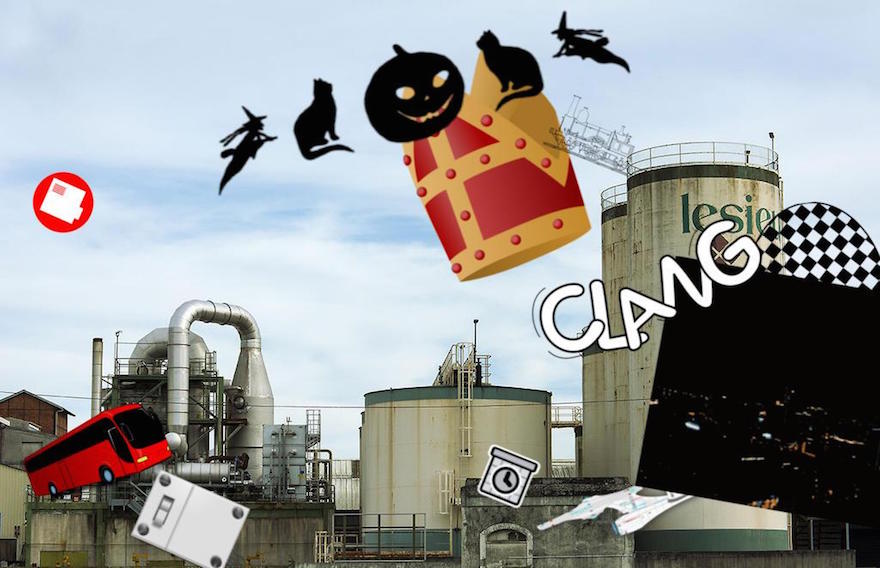This article is part of a collaboration with iQ by Intel.
Twitter, for the uninitiated, is a wonderful place where fake celebrities, robot teenage girls (@oliviataters), and ASCII artists roam wild. But the popular social networking service is ever-evolving. Some people, mainly writers of experimental code, think it could emerge as an equally crazy and vibrant platform for playing games.
Those people include Matthew Gallant (@Gangles), the creator of a number of unconventional Twitter accounts. “The possibilities within Twitter as a medium are just now being tentatively explored,” he told me. Gallant’s inventions include an account that composes “unreliable” horoscopes (@HoroscopeBot) and another one that dutifully provides fake bios to users who have yet to create one for themselves (@VerifiedBioBot). These curios are full-fledged bots—accounts made by man but controlled by machine—and they could be laying the groundwork for new, peculiar kinds of play.
To fully comprehend the possibilities of Twitter as a game platform, it’s important to first look at Twitter bots, which are automated accounts that trawl the great divide of the Internet, salvaging amusing nonsense. The vast majority of bots are not interesting at all, spamming our accounts with marketing noise and opportunities to make big money working from home. And yet the back alleys of Twitter are populated by little computer programs that have been taught to use social networks in strange and glorious ways. These bots tap into the Internet’s capacity for what the computer scientist Jonathan Zittrain calls “generativity,” or people using technology in ways that the original creators never imagined.
Twitter bots have come a long way since Every Word Bot (@everyword) spammed timelines with the complete lexicon of the English language, one word at a time. It seems like forever ago since we were debating whether Horse ebooks (@Horse_ebooks) was a dumb person or a smart bot. As Twitter bots have evolved, so has their inclination towards playfulness. It is not that unusual to find bots striking up whimsical conversations with other bots. More importantly, some bots have been programmed to play games with other bots while the rest of us gawk, as is the case with the eternal struggle of wits between Chess Bot White (@ChessBotWhite) and Chess Bot Black (@ChessBotBlack).

Little playful encounters like these are fun diversions, but we generally like to play video games ourselves rather than kick back and watch two computers go at it. Games require, among other things, active participation. As luck would have it, “there are quite a few bots that will actually listen,” Gallant says.
The first inklings can be seen in bots like Art Assignment Bot (@artassignbot), which doles out random instructions for art projects of the bizarre. It tweets assignments such as “Build a wearable about self-portrait, due on Thu, Mar 08, 2018” and half-expects the artistically-inclined to play along. Other bots are artists themselves, such as Lowpoly Bot (@Lowpolybot), who takes the images tweeted at it and transmutes them into abstract digital output.
Now that we are living in a Twitterverse where semi-intelligent computer programs actually want to interact with us, people have begun sussing out how games could be made with it. One way is for the bot to become the master of ceremonies, while us followers compete against each other at their game. Gallant’s first stab at this is called Tiny Crossword (@TinyCrossword), a bot that scours Wikipedia for clues, then tweets miniature, three-word crossword jumbles. The first person who replies correctly wins, and the bot gives them a nod. Now we have a game with a goal that can be won.
A more democratic approach is for the bot to preside over a game while the whole of Twitter votes on what to do, à la Twitch Plays Pokémon. This was the idea behind Maze Bot (@mazeBotGame), a bot about escaping from a maze. This was also the idea of Darius Kazemi’s infamous F*, Marry, Kill (@FMKVote), a bot where you voted on which of three historical figures you would marry, murder, or have sexual relations with. Long before that, someone had tried recreating the classic text adventure Zork as Zork Bot (@zorker), but the bot crashed and never made a comeback.
Granted, these are all simple games with low variance, but Gallant believes the love affair between games and bots is young. He points to bots that could design sophisticated levels for games on Twitter, bots that randomly “generate worlds within the size of a Tweet,” he says.
One such bot is Tiny Star Fields (@tiny_star_field), which spatters its messages with black-and-white symbols that create fields of stars. Then there is one called Dungeon Bot (@dungeon_bot) where a character is lost in an endless sea of bricks like those found in so many video games. Another example he gives is A River (@ARealRiver), a bot that uses emoji to draw a continuous body of water that flows up your timeline.

Where does the river lead? Hopefully to a future where bots curate vast bodies and huge worlds that we can play in on Twitter. Further downstream it might even cross over into the Internet of things, where physical objects become interconnected through technology. Then your microwave bot will be chattering with your blender bot about how they can cheat you at rummy.
Header image is from @thefacesblur‘s interaction with @lowpolybot, @pixelsorter, and @a_quilt_bot.
